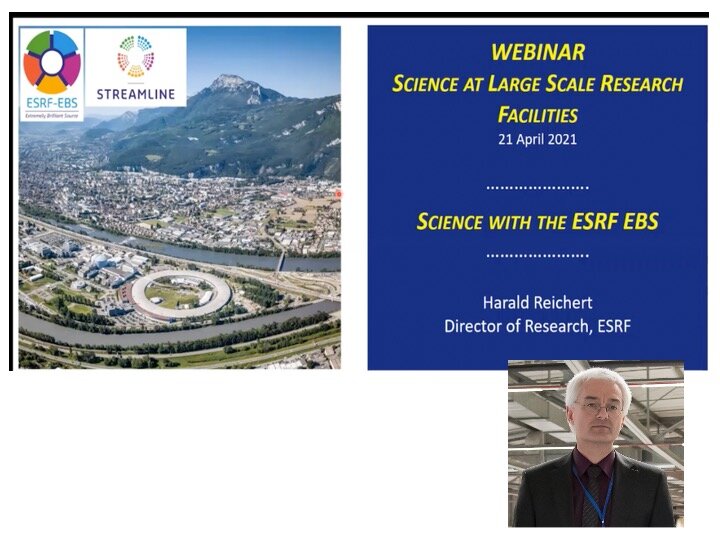VIDEO - Science at Large Scale Research Facilities - Science with the ESRF EBS with Harald Reichert


VIDEO - Science at Large Scale Research Facilities - Science with the ESRF EBS with Harald Reichert
The ESRF started operation in 1992 as the world’s first 3rd generation synchrotron radiation source. Since 2009 the ESRF engaged in an ambitious upgrade programme delivering an accelerator complex and beamlines with orders of magnitude higher performance. The replacement of the old ESRF storage ring based on the double-bend achromat (DBA) lattice by the EBS storage ring based on the newly developed HMBA lattice with seven bending magnets per cell started in 2015. During a long shutdown the EBS storage ring was installed in 2019 and went into its commissioning phase in December 2019.
Speaker: Harald Reichert, European Synchrotron Radiation Facility, Grenoble, France
This webinar is part of LINXS webinar series: Science at Large Scale Research Facilities, introducing the latest scientific breakthroughs and developments at large scale research facilities from all over the world.
Abstract
The ESRF started operation in 1992 as the world’s first 3rd generation synchrotron radiation source. Since 2009 the ESRF engaged in an ambitious upgrade programme delivering an accelerator complex and beamlines with orders of magnitude higher performance. The replacement of the old ESRF storage ring based on the double-bend achromat (DBA) lattice by the EBS storage ring based on the newly developed HMBA lattice with seven bending magnets per cell started in 2015. During a long shutdown the EBS storage ring was installed in 2019 and went into its commissioning phase in December 2019. The EBS storage ring was successfully commissioned as the first 4th generation high energy synchrotron light source during the first six month in 2020.
The ESRF resumed its user operation at full current and nominal emittance as scheduled. The user programme was then ramped up quickly with all beamlines taking beam today. Nominal beam parameters could be confirmed early on in the process and the beamlines resumed user operation in September 2020 as planned. The expected improvement of the key beam parameters in terms brilliance, coherence and flux were confirmed across the entire beamline portfolio. To date more than 1000 user experiments have already been performed with first exciting scientific results already submitted for publications. The underlying design of the new storage ring as well as the performance reached will be explained together with early scientific results demonstrating the potential of this new generation of sources X-ray for the next big step in X-ray science.
Biography
Harald Reichert, is Director of Research in Physical Sciences at the European Synchrotron Research Facility (ESRF) since 1 January 2009. He holds a doctorate in Physics from the University of Munich obtained in 1995 and has been performing research on condensed matter with synchrotron radiation since then. After graduation he went first to the University of Houston (USA) on a Feodor-Lynen Fellowship before moving briefly to the University of Wuppertal (Germany) and finally to a position at the Max Planck Institute for Metal Research in Stuttgart (Germany) where he spent 11 years in developing methods for the study of deeply buried interfaces. In the past 15 years he became one of the leading experts for the exploitation of high energy X-rays for materials science including the development of dedicated instrumentation. For this work he received the Walter-Schottky-Award for Solid State Physics from the German Physical Society in 2002.
He joined the ESRF in 2009 as Director of Research. During his mandate at the ESRF he is responsible for the renewal of the beamline portfolio of the ESRF and the development of a long-term scientific strategy for the facility in the context of an upgrade of the source to a near diffraction limited light source. He is a member of numerous advisory bodies for X-ray science around the world.
